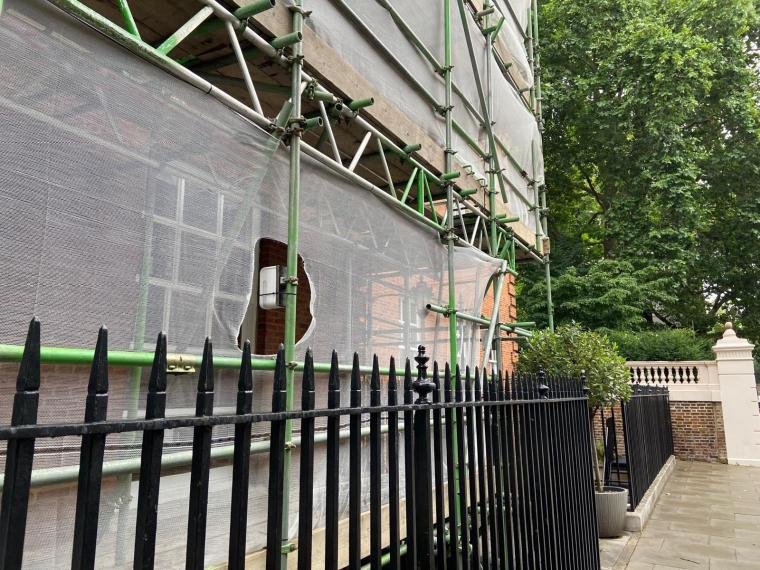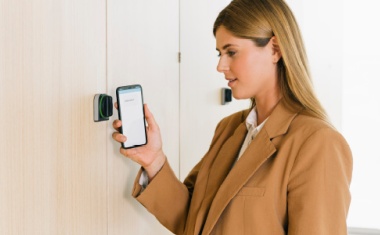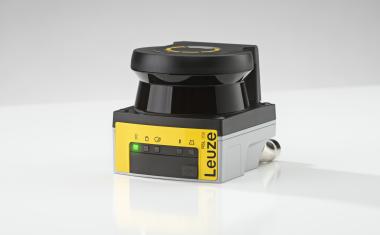Why Building Façade Security Is Critical to Preventing Intrusions
While perimeter protection is a top priority in most security strategies, one critical area often remains overlooked: the building façade.
Façades are often seen as mere structural features rather than potential risk zones, but recent incidents show just how critical they are to building security. Early this year, prehistoric gold treasures were stolen from a Dutch museum when burglars blasted through an unsecured door. In 2024 in London, a group of burglars smashed through the glass frontage of an Apple Store , bypassing traditional entry points entirely. And that same year in Southern Europe, there were multiple cases of intruders reaching the inside of critical sites through unsecured fire exists and unmonitored ventilation shafts. These are not isolated events, and they highlight how every entry point in a building, visible or hidden, can be a potential vulnerability.
Common vulnerabilities and high-risk zones

What makes façades particularly vulnerable is how many entry points are often out of sight and away from main access points. Doors used for fire escapes or staff access, loading bays, ventilation openings, side passages and utility access points are rarely manned and not always within surveillance coverage. Exposed elements like ground-floor windows and glass walls are an easy target for forced entry or vandalism. In many cases, these are the exact points where intrusions happen, not because security wasn’t planned, but because it wasn’t extended far enough.
The challenge isn’t just visibility of an intrusion; it’s the response time. Traditional video surveillance may capture the incident, but it often does so after the fact. Intrusion detection technologies offer a proactive alternative; they are designed to trigger alerts at the very moment an event begins, such as someone approaching a window, tampering with a lock, or attempting to cut through a wall. The result is a faster response and a greater chance of intervention before damage is done.
One of the key advantages of façade intrusion detection is the ability to act before any damage occurs. If an alarm is only triggered by an indoor sensor, it means an intruder has already breached the building, often causing costly damage to doors, windows, or structural elements in the process. In some cases, the cost of this damage can far exceed the value of the items being protected. By detecting suspicious activity at the façade level, security teams gain valuable time to respond, helping prevent entry altogether and reducing both risk and repair costs.
One of the key advantages of façade intrusion detection is the ability to act before any damage occurs. If an alarm is only triggered by an indoor sensor, it means an intruder has already breached the building, often causing costly damage to doors, windows, or structural elements in the process. In some cases, the cost of this damage can far exceed the value of the items being protected. By detecting suspicious activity at the façade level, security teams gain valuable time to respond, helping prevent entry altogether and reducing both risk and repair costs.
Smart volumetric detection
For small zones like windows, balconies or fire exits, outdoor narrow PIR detectors offer an ideal solution. Compact and discreet, short-range PIR sensors, such as our FTN series, can cover tight areas between 2m and 5m. Meanwhile, for larger areas, the BXS series provides up to 12m of detection on either side of the sensor, with independent left–right zone detection that enables accurate event verification.
Both FTN and BXS sensors are equipped with Optex’s unique SMDA logic and are known for their extremely low false alarm rates. Both series are ideal for wireless or hardwired setups, with simple mounting and a low-profile design that blends into architecture.
For broader perimeter applications, the Boundary Guard BX-100 Plus is designed to protect building façades up to 30m, using infrared beam detection combined with a sounder to deter intruders before a break-in occurs.
Securing scaffolding during renovation works
Volumetric outdoor detectors like the FTN and BXS series are highly effective for protecting scaffolding during façade renovation works. Scaffolding can give intruders easy access to upper floors, which often lack indoor intrusion detection. By installing these sensors along the scaffold structure, unauthorized access attempts can be detected early, before a burglar reaches the building, providing critical protection for residents and their belongings during renovation periods.

2D Lidar for high-security environments
When higher precision is required, such as for glass-fronted walls, skylights, ventilation conducts or loading bays, 2D Lidar sensors provide an advanced solution. Using laser-based technology, the sensor can create a narrow virtual layer of detection that can identify the exact location, size, and distance of an intruder. Lidar sensors are not affected by variable light or fluctuating temperature, making it ideal for 24/7 outdoor and indoor use. For buildings with extensive glazing, Lidar-based systems like Redscan reduce the need for multiple indoor glass break detectors, significantly lowering installation and maintenance costs.
The Redscan series includes a variety of models to suit different detection ranges from 20m to 100m. Installed horizontally, it can protect roofs, open atriums and skylights; or vertically it creates a very narrow detection field that can cover windows, glass façades, and restricted zones, without overspilling into public or pedestrian areas. It can also provide an extra layer of security for metal-clad buildings, detecting attempts to cut through sheet metal, an increasingly common tactic in warehouse and storage facility break-ins.
Detecting wall drilling and structural tampering
For high-security clients, threats don’t just come through doors or windows, they come through the walls. Wall-mounted fibre optic sensors can detect vibrations from drilling, hammering, or cutting attempts, ideal for vaults, server rooms, secure labs or high-risk storage areas. By utilising passive optical fiber, they’re immune to EMI and ideal for critical infrastructure environments. The Fiber Defender series works with a variety of security platforms and provides precise zone-based detection, making it easier to narrow down intrusion locations during a live event.
Why a multi-layered approach works best
Each intrusion detection technology has its place, but there is no one size fits all solution. That's why a multi-layered security strategy, where each system reinforces the next, is the most effective way to protect a site. It’s not enough to secure the perimeter and the front door. Every surface of the building, including the façade, needs to be considered as part of the security boundary.
The reality is that intrusion often begins before a breach even occurs. By extending detection to the building’s outer surface, you gain precious seconds to respond, investigate, and intervene. Whether it’s for a commercial office, a logistics hub, a government facility or a residential building, façade security adds an essential layer to the overall protection strategy.













